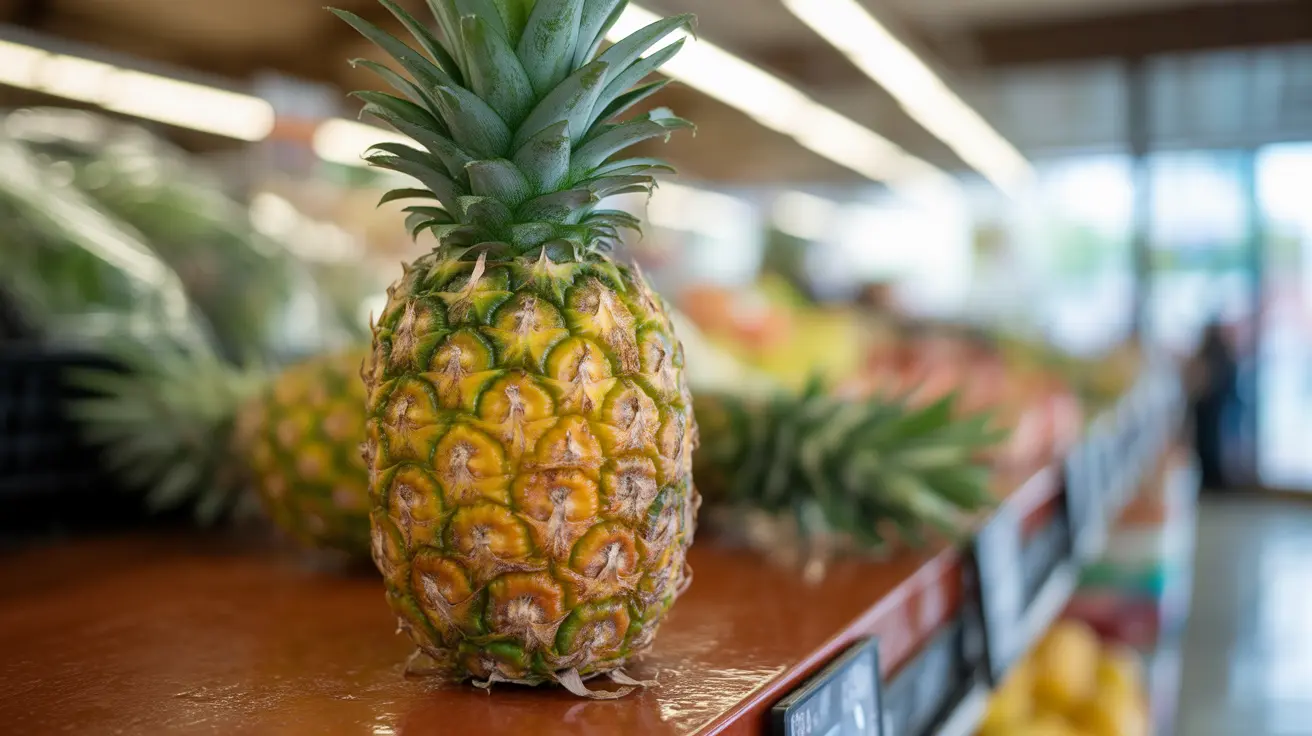Selecting the perfect pineapple can make all the difference between enjoying a sweet, juicy tropical treat and ending up with a disappointing fruit experience. Whether you're shopping at your local grocery store or farmer's market, knowing the key indicators of ripeness will help you choose a delicious pineapple every time.
In this comprehensive guide, we'll explore the essential factors that determine pineapple quality and share expert tips to help you select the best fruit for your money.
Visual Indicators of a Ripe Pineapple
The appearance of a pineapple can tell you a lot about its ripeness and quality. While color alone isn't the definitive indicator, there are several visual cues to consider.
Color Assessment
Look for a pineapple with a predominantly golden-yellow color. Some green coloring is acceptable, but avoid fruits that are entirely green as they were likely harvested too early. The yellow should be a warm, golden hue rather than pale or washed out.
Shell Condition
Examine the pineapple's shell pattern. The individual segments, called "eyes," should be relatively uniform in size. Avoid fruits with bruising, soft spots, or dark areas that might indicate decay.
The Importance of Touch and Weight
Testing Firmness
A ripe pineapple should feel firm but yield slightly when gently pressed. If it's rock-hard, it's underripe; if it's soft and mushy, it's overripe. The ideal texture falls between these extremes.
Weight Assessment
Pick up the pineapple and evaluate its weight relative to its size. A heavier pineapple typically indicates higher juice content, which correlates with better flavor and texture. Compare similar-sized pineapples to find the weightiest option.
Using Your Senses: Smell and Sound
The Aroma Test
The base of a ripe pineapple should emit a sweet, fragrant aroma. If you can't smell anything, the fruit likely isn't ripe. Avoid pineapples with fermented or sour smells, as these indicate over-ripeness or spoilage.
Sound Check
Gently tap the side of the pineapple. A ripe fruit should produce a hollow, solid sound. This indicates proper density and juice content. A dull or flat sound might suggest the fruit is either overripe or dried out.
Leaf Indicators and Freshness
Crown Assessment
Look for fresh, green leaves in the crown with minimal browning or drying at the tips. The leaves should be firmly attached and crisp, not wilted or easily pulled out.
Center Pull Test
Try to pull out a center leaf from the crown. If it comes out easily, this typically indicates the pineapple is ripe. If it requires significant force, the fruit may need more time to ripen.
Frequently Asked Questions
How do I pick a ripe and sweet pineapple at the grocery store?
Look for a pineapple with golden-yellow coloring, firm but slightly yielding flesh, and a sweet aroma at the base. The fruit should feel heavy for its size, and the leaves should be fresh and green. Avoid pineapples with soft spots or strong fermented smells.
What does a ripe pineapple smell like, and how can I check for ripeness using scent?
A ripe pineapple should have a sweet, fragrant tropical aroma at its base. Sniff the bottom of the fruit - if you can't smell anything, it's likely not ripe. Avoid pineapples with fermented or sour odors.
Should I look for a certain color when buying a pineapple, and how important is color compared to other signs of ripeness?
While color is important - look for golden-yellow hues - it shouldn't be the only factor. Color should be considered alongside firmness, aroma, and weight. Some green coloring is acceptable, but avoid completely green pineapples.
Can pineapple leaves tell me if the fruit is ripe, and is there a trick to test the leaves?
Yes, the leaves can indicate ripeness. Try pulling a center leaf - if it comes out easily, the pineapple is typically ripe. The leaves should also be fresh and green, not brown or dried out.
Why does the weight of a pineapple matter, and how does it affect the juiciness and sweetness?
A heavier pineapple typically contains more juice, which correlates with better flavor and sweetness. Compare pineapples of similar size and choose the heaviest one for the best eating experience.




